Simple Tips For Printing A Book
Anyone attempting to write their own book will know and appreciate how much work and effort goes into the process. But writing your last page isn’t the end of journey. Once your writing is complete, you need to consider how to get your work onto a printed page and available for people to read and buy. This process requires careful consideration in many aspects. Here are some guidelines as to some of the printing issues you need to consider:
What type of paper to choose
There are many types of paper you can choose when printing your book. There can be quite a difference in appearance in the range of available paper options. Consider what kind of book you are printing. This will dictate the paper type most appropriate for your work. Paper types refers to the finish of the paper which affects the look of the paper rather than the feel or the weight. These ratings are referred to as gsm (grams per square metre). So, dependent upon the nature and classification of your book, you should choose the best paper type. For example, if your book is a novel, biography, or a story book, then uncoated paper, which produces a matte finish, is the most chosen option. If your publication is a photo book or a brochure type, then most people would go with a silk finish which sharpens images and highlights colours. A different choice again is a gloss finish to the paper, which is the favoured option for a children’s book or informational book such as a cookery or recipe book. The main consideration here is to avoid the common mistake. The lowest gsm paper does not necessarily mean it is a cheaper option, whilst a higher gsm paper does not automatically guarantee a superior quality.
The numerous binding options
The same factors are relevant when opting for the type of binding you want to use for your book. There are different book binding styles from which to choose, so consider what type of book you are printing. Perfect binding is ideal for any paperback book. This binding method sees the covers and pages held together with a strong adhesive. A hardback book is best served with Hardback Binding which encases the pages in a board covering using, again, a strong adhesive. If you are producing a booklet, magazine, or handbook, then consider Staple Binding or Saddle Stitch Binding which provides a durable, yet flexible document. If you are printing a recipe book or training manual type document then a popular, practical option is Coil Binding which uses a plastic, or metal coil wound through both covers and the pages. It allows the book to be opened 360 degrees and comfortably placed on a flat surface to reference.
Why the spine is important
The spine contributes greatly to the overall appearance of the book, as well as it’s durability. This will be dictated by the size and type of book you are printing. If, for example, your book is a novel, then you will want a spine wide enough to display the book’s title and the author’s name whilst it is sat on a shelf in a bookshop or library.
Take time over your layout
There are two distinct orientations, or formats, of the pages of your book – landscape and portrait. Once again, consider the content and type of book you are printing to select the more appropriate choice for the book’s content and appearance. How you organise and format the contents of your book can greatly affect the reader’s experience. Choosing to divide your book into attractive sections, perhaps with photographs or illustrations, for some types of books will help guide the readers journey.
To colour or not to colour
Traditionally, if your book is plain text, then the advice would be to opt for black and white printing. But, if your book contains many images, photos, or illustrations, then perhaps colour printing is a preferable option. However, there are new trends emerging with book printing all the time and sometimes doing something unexpected with your publishing can be just the ticket to getting you noticed. Keep in mind though, that colour printing may well be a more expensive option.
Your printing preferences
You need to consider the printing itself. Choose an online book printing supplier that offers cheap but quality, book printing. Digital printing offers low set-up costs for shorter print runs and the option of printing just the number of copies you need. Choose a print company that can offer you advice and guidance with regards to design and proofing of the layout of your book. This will ensure you get a more professional finished product.
Choose Book Printing
Whatever type of book you need to publish, BookPrinting have you covered. Manufactured to an exceptionally high standard, we offer the best online book printing service, and are renowned for the quality of books we produce. Our dedicated team have a wealth of experience in the book production and publishing arena and can provide assistance to anyone who wants to print single book printing in the UK. We offer short run hardbound book printing, custom book printing, and paperback printing, all within the UK. Whatever your requirements, we are confident we can help! Whether you’re looking to order book printing online or are looking for a free bespoke estimate, contact us today and let us help you to get a book printed. Call us on 01525 621742 / 01525 621754 or email: enquiries@bookprinting.co.uk.

